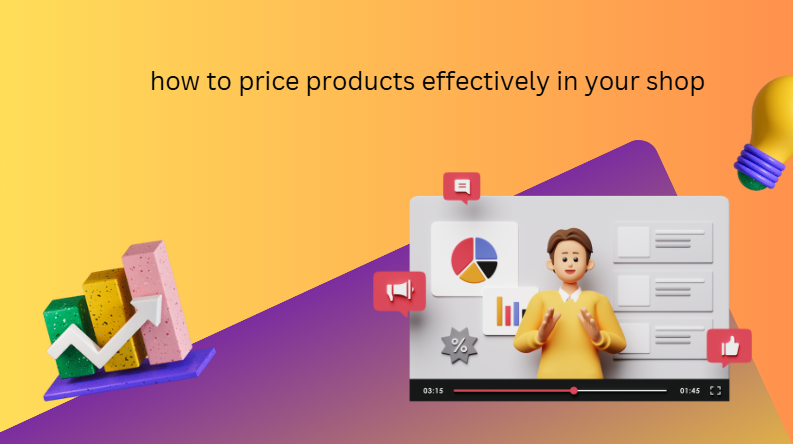Understanding Your Costs Is Fundamental
How to price products effectively in your shop starts with a clear understanding of all costs involved in bringing a product to market. This includes not only the direct costs such as raw materials and manufacturing but also indirect expenses like rent, utilities, labor, marketing, and shipping. By accurately calculating shop your total costs, you can establish a minimum price threshold below which selling would lead to losses. Many shop owners make the mistake of ignoring hidden costs or underestimating operational expenses, which can severely impact profitability. Once you know your break-even point, you can begin to build a pricing strategy that ensures sustainability and growth.

Researching Your Market and Competitors
How to price products effectively in your shop also depends heavily on understanding your target market and competition. Customer demand, purchasing power, and preferences influence how much shoppers are willing to pay. Conducting market research through surveys, focus groups, or analyzing competitors’ pricing can provide valuable insights. For example, if your competitors offer similar products at lower prices, you need to assess whether your shop’s value proposition justifies a higher price or if you need to adjust your pricing to remain competitive. Additionally, knowing your market segment—whether budget-conscious buyers or premium customers—helps tailor pricing strategies that resonate with your audience and maximize sales.
Choosing the Right Pricing Strategy
How to price products effectively in your shop requires choosing a pricing strategy aligned with your business goals. Common strategies include cost-plus pricing, where a fixed margin is added to the cost; competitive pricing, matching or slightly undercutting rivals; value-based pricing, setting prices based on perceived value to the customer; and penetration pricing, starting with low prices to attract customers before increasing them later. Each approach has advantages and risks. For instance, cost-plus pricing is straightforward but may ignore market conditions, while value-based pricing can command higher profits but requires deep customer insight. Selecting the right strategy depends on your shop’s unique position and long-term vision.
Considering Psychological Pricing Techniques
How to price products effectively in your shop often involves leveraging psychological pricing tactics to influence buyer behavior. Pricing just below a round number, such as $9.99 instead of $10, can create a perception of better value. Bundle pricing, where multiple items are sold together at a discount, encourages larger purchases. Offering tiered pricing options allows customers to choose according to their budget and needs, potentially increasing sales volume. Moreover, creating urgency with limited-time offers or exclusive deals can prompt quicker buying decisions. These subtle psychological cues play a significant role in shaping customer perceptions and can boost both sales and profit margins.
Regularly Reviewing and Adjusting Prices
How to price products effectively in your shop is not a one-time decision but an ongoing process. Market conditions, supplier costs, customer preferences, and competitive landscapes continually evolve, necessitating periodic price reviews. Regularly analyzing sales data and profit margins helps identify when prices need adjustment to maintain competitiveness and profitability. Seasonal factors, promotional campaigns, or inventory levels may also influence pricing decisions. Being flexible and responsive to change enables your shop to adapt quickly, ensuring that your pricing strategy remains relevant and effective over time.